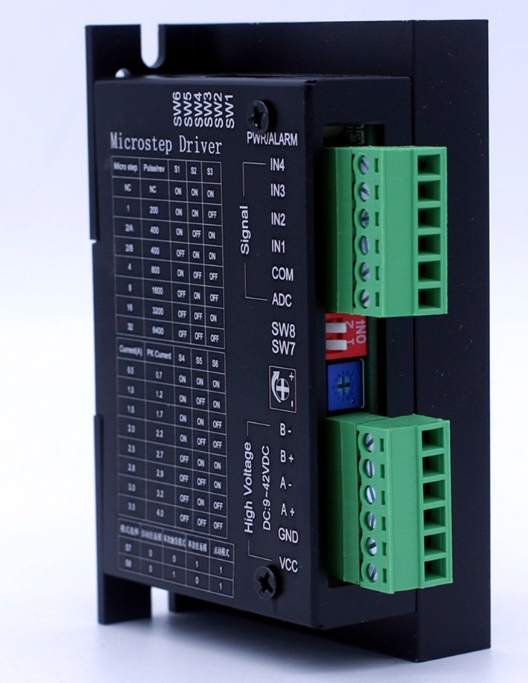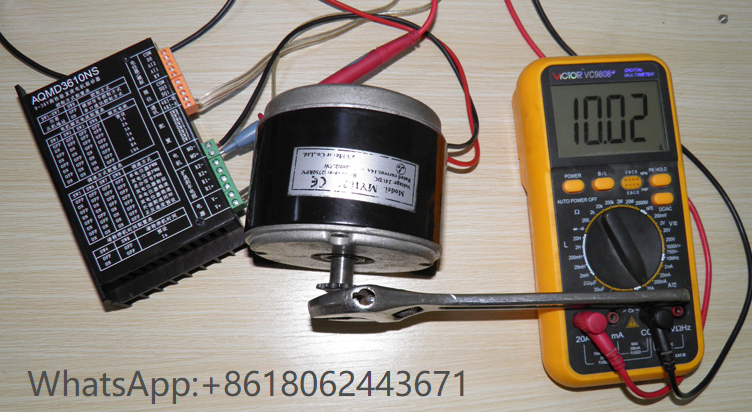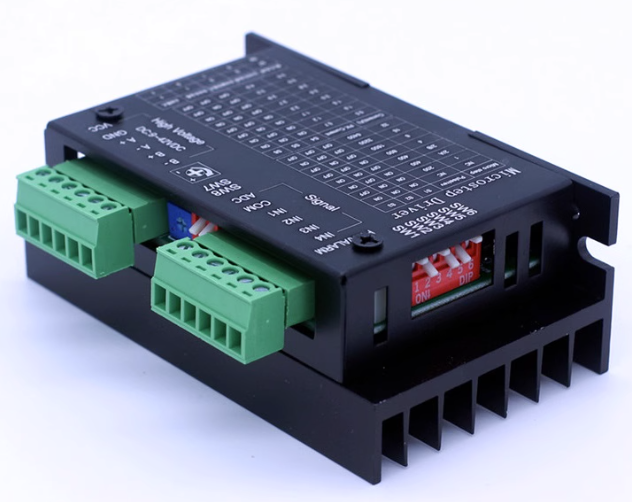Microstep subdivision settings for stepper drivers. The microstep subdivision setting is a feature in stepper motor drivers that allows a complete step angle to be subdivided into smaller parts.
Through microstep subdivision, the position accuracy and smoothness of the stepper motor can be improved, and vibration and noise can be reduced. 
Microstep subdivision settings for stepper drivers – Stepper drives with integrated drive and control functions – PLC interface – economical drive concept
Microstep subdivision settings for stepper drivers
When setting up microstep segments, there are a few things to consider:
1. Choose the appropriate subdivision value: The choice of microstep subdivision value depends on your requirements for system accuracy and smoothness. Higher subdivision values will improve position accuracy and smoothness, but may reduce torque output. Common microstep subdivision values are 2, 4, 8, 16, 32, 64, 128, 256, etc.
2. Configure the driver: according to the selected microstep subdivision value, configure the corresponding DIP switch or setting parameters according to the guidelines in the drive manual. Different models of drives may be configured differently, please read the manual carefully and follow the instructions to set it up.
3. Modify the control program: When changing the microstep subdivision value, the number of pulses in the control program needs to be modified accordingly to ensure that the motor moves according to the expected distance and speed. For example, if you increase the subdivision value from 2 to 4, the number of pulses in the control program also needs to be doubled.
4. Consider the balance between torque and precision: When setting up microstep subdivision, you need to weigh the relationship between torque and precision. Higher subdivision values, while improving accuracy, may reduce the torque of the motor. Therefore, when choosing a breakdown value, make trade-offs based on your actual application needs.
5. System testing and tuning: After completing the microstep subdivision setting, the entire stepper motor system is tested. Pay attention to the running stability, noise, accuracy and other indicators of the motor, and adjust it in time if there is a problem.
Stepper motor driver controller integrated board
By setting up microstep segmentation properly, you can optimize the performance of your stepper motor for precise and smooth control. Please note that during commissioning, it is important to follow the relevant safety specifications to ensure the safety of personnel and equipment.
How can I modify the number of pulses in the control program?
To modify the number of pulses in the control program, you need to know the model of the stepper driver and controller used and follow these steps:
1. Determine the required pulse frequency: according to your motion needs, determine the required pulse frequency. For example, if motion at a speed of 100 pulses per second is required, the pulse frequency should be set to 100 Hz.
2. Configure the driver: according to the selected microstep subdivision value, configure the corresponding DIP switch or setting parameters according to the guidelines in the drive manual.
Stepper motor integrated controller
3. Testing and debugging: After the modification is completed, test the system and carry out necessary debugging to ensure that the motor moves according to the expected distance and speed. If you encounter problems, you can refer to the drive manual or seek technical support.
It is important to note that different stepper drivers and controllers may have different interfaces and programming methods, so the specific operating steps may differ. Before making adjustments, read the relevant documentation carefully and follow the recommended methods.
What do I need to pay attention to in the stepper driver microstep subdivision setup?
The following points need to be noted when setting up a stepper driver microstep:
1. Confirm the drive model: Before setting the microstep subdivision, you need to confirm the model of the stepping drive used, and consult the corresponding manual to understand the configuration method.
2. Confirm the controller model: The microstep subdivision needs to match the controller, so it is necessary to confirm the model of the controller used and ensure that it supports the required microstep subdivision value.
AQMD3610NS stepper motor driver product kit
3. Consider motor performance: When selecting microstep subdivision values, you need to consider the performance and load of the motor. Smaller subdivision values may require more pulses, but may reduce the output torque of the motor. Therefore, it is necessary to choose the appropriate subdivision value according to the characteristics and load requirements of the motor.
4. Adjust the pulse frequency: When setting the microstep subdivision, you need to pay attention to the change of pulse frequency.
If you double the subdivision value, the number of pulses will also double, but the pulse frequency may be halved. Therefore, the pulse frequency needs to be adjusted according to the motion needs and system performance.
Stepper motor drive control integrated machine – spontaneous pulse drive
5. Ensure that the interface and timing are correct: When modifying the control program, it is necessary to ensure that the interface and timing with the stepping driver are correct. If the interface or timing is incorrect, it may cause the system to malfunction properly or generate incorrect motion.
6. Test and debugging: After the modification is completed, the system needs to be tested and debugged to ensure that the motor moves according to the expected distance and speed. If you encounter problems, you can consult the documentation or seek technical support.
In summary, when setting up a stepper driver microstep segment, it is necessary to understand the driver and controller model used and select the appropriate segmentation value and pulse frequency according to your needs. At the same time, ensure that the interface and timing are correct, and carry out the necessary testing and debugging.

